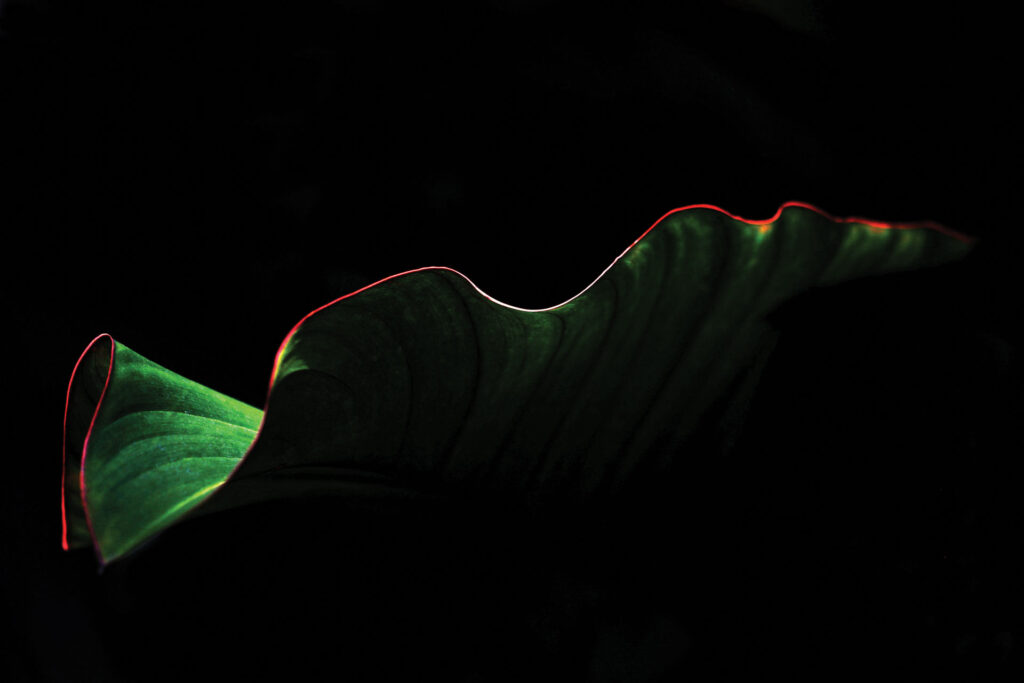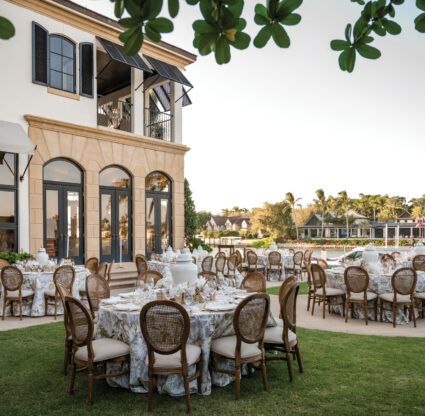Mariah Landry
Landscape Architect, VIVA Landscapes
Mariah Landry isn’t a force of nature. She’s a force for nature. During business hours, you’ll find her poring over blueprints for a lush and liveable native landscape, complete with walkable gardens with endemic plants, to weather the storms on Sanibel Island. After hours, or perhaps before, you may spot her on the water with her charter captain-photographer husband, John, or meeting with longtime partner Captains for Clean Water to brainstorm creative ways to promote native foliage, as they did with the mangrove arrangements that adorned tables this season at the nonprofit’s annual gala.
Mariah got her start through Sanibel darling R.S. Walsh Landscaping, where she learned to harness the power of native flora. In the decade since, the Iowa transplant has established herself as a trusted landscape architect in Southwest Florida. She inspires others to embrace the beauty of our regional vegetation through her Fort Myers-based VIVA brands, including VIVA Landscapes and VIVA La Casa rental homes.

Mariah moved to the region almost 10 years ago for the subtropical foliage, admiring the greenery’s prominence throughout rural and urban areas, and she’s determined to keep Southwest Florida green. “I might not even realize I’m doing it because it’s second nature to me at this point,” Mariah says. “But, the fact that other people are picking it up and sharing it, that’s the ripple effect we need.”
After Hurricane Ian, Mariah and John were among the first to boat to Sanibel and Captiva Islands. They used John’s drone to capture footage of damaged property for clients. Though the islands may look similar to the tropical destinations of South America and beyond, Southwest Florida’s climate is subtropical—and Mariah seeks to respect that—despite local clients having historically been drawn to showy tropical breeds. She points to the newer-built homes where she installed tropical landscapes that were washed away in the storm while the native plants remained. Mariah is heartened to see more clients eager to embrace the native look for longevity and resiliency. She guides local homeowners to swap nonnatives for similar-looking endemic plants (saw palmettos instead of Chinese fan palm, for instance), and to add storm-smart elements, like inland rain gardens to help retain water in the event of flooding.
Currently, she’s working with Gasparilla Island Conservation and Improvement Association on revamping the downtown section of the 5-mile GICGA Bike Path Boca Grande, filling the 2-block segment with native flora. For the eco-conscious DIY enthusiasts, she recently started offering a lower-cost consulting service, where she’ll assess your property and provide guidance on the best plants and placements for your yard.
She walks the talk in her home, too. Mariah is working to incorporate a traditional chickee hut into her backyard’s more-than-50-year-old Cuban laurel to serve as her outdoor office. “I think about growing up and being outside a lot and then recreating that as an adult,” she muses. “What do I enjoy? I enjoy going outside—but we’re grilling now. We’re having a glass of wine, you know? I love just walking the garden and checking on my plants.”
—Jaynie Bartley
Casey Streeter
Fisherman and owner of Island Seafood Market
Casey Streeter gestures toward the front of his Island Seafood Market, toward the hole where the double doors used to guard the Key lime-hued fish house where, pre-Hurricane Ian, locals and out-of-towners regularly gathered for picnic fixings and fresh-off-the-water bounty. We are inside a scar; the shell of the building is no longer choked with 2-plus feet of fetid mud deposited from the storm’s churn, and a sturdy roof shields Casey from the day’s drizzle. But exposed rafters and a roar of traffic separating us from the pilings across the street, where more colorful buildings that define Matlacha used to be, remind us there’s still a ways to go in rebuilding the artsy fishing town. Beyond, stand the mangroves. Brown, but not dead. Traces of green tickle the far end of the pass. These are the waterways that the Michigan native has wandered for 12 years. “It’s just pure,” he says.
His son, Kai, and daughter, Sailor, have grown up in this place—one of the few working waterfronts remaining on Florida’s Southwestern shores. Casey and his wife, Katie, built the market as a destination for fresh seafood that’s hauled in on one of Casey or his fellow fisherman’s grouper boats. Island Seafood Market became a staple for food and culture. Passionate about protecting the island’s way of life, Casey founded Florida Commercial Waterman’s Conservation in 2018 in the wake of the devastating red tide bloom. The nonprofit works with the National Oceanic and Atmospheric Administration to have local captains monitor water quality changes. Casey understands the well-being of our waters is linked to his community’s livelihood and that captains, who are constantly in the field, can help bridge knowledge gaps.
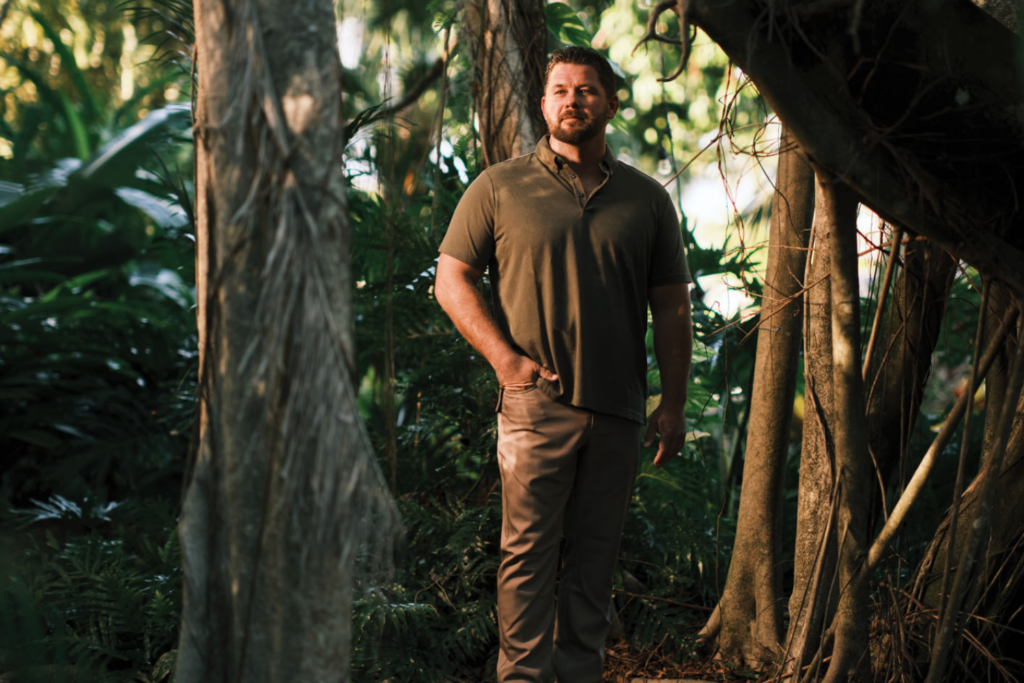
In less than 24 hours, Hurricane Ian upended Casey’s life, but in the immediate aftermath, he wasn’t focused on his business. While he and his family worked to rebuild their homes, Casey called the Florida Fish and Wildlife Conservation Commission, county commissioners and state representatives, dialing every number he could until he was directed on where to help. He formed a new business with fellow fishers, Fisherman’s Disaster Response, and collaborated with a federal emergency management contractor to remove and haul debris. Casey got to work.
The storm surge ripped away Matlacha’s buildings, marooning the shredded structures in gnarls of mangroves. From December 2022 until August 2023, Casey and a team of others scoured every bay and inlet his barges could reach—nearly 700 miles of coastline—and crawled through the mucky undergrowth to clean up debris. “I feel accomplished for what we’ve done,” Casey, who hopes to reopen the market by the end of the year, says. “It’s just like any other infrastructure. [Our work] is the bridge from the water to the land.”
— Andrew Atkins
Kealy McNeal
Coastal Watch director at Sanibel-Captiva Conservation Foundation
On a smudged January afternoon, Kealy McNeal cuts the wheel of her truck on a narrow stretch of Woodring Road along Tarpon Bay’s northeastern lip. She peers through branches of weathered mangroves to the eroding shoreline a few feet from the road, a glaring reminder of the island’s dependence on its coastal protectors. “It looks like there’s a few more up here that are alive,” she says, pointing out some small, green stems creeping out of the gnarl of slimy brown roots and sand. It’s her first time back to this mangrove restoration site in about a month; she’s been juggling an endless list of recovery efforts in Hurricane Ian’s wake. Though there are signs of lost seedlings—broken stems and barren patches where volunteers previously planted the trees—there’s promising evidence of little ones surviving.
For three years, Kealy has served as director of Sanibel-Captiva Conservation Foundation’s Coastal Watch crew, which implements volunteer-based solutions for local conservation. After landing at Sanibel Sea School in 2018 as an outdoor education coordinator, she ran camps and kayak tours to share the importance of Southwest Florida’s natural ecosystems. She loves talking about how mangroves, with their sediment-trapping root systems, act as natural seawalls against intense storms and help prevent erosion—an ever-present concern for the island, where sections are slowly disappearing.
When Kealy transitioned to her current role with SCCF, she revamped the programming to incorporate more community-driven conservation strategies. Her adopt-a-mangrove project, introduced in 2020, revolutionized the city’s approach to coastal restoration via natural solutions, calling on locals to be ‘Mangrove Mamas’ and care for propagules from their own backyards—picture kiddie pools and lanais hosting seedlings for five to six months. Between individuals, schools and organizations, the group cared for more than 1,000 mangroves this season. When it comes time to replant, she takes eager volunteers, ranging from teenagers to octogenarians, out on boat trips to nearby sites to rehome hundreds of the vital plants.
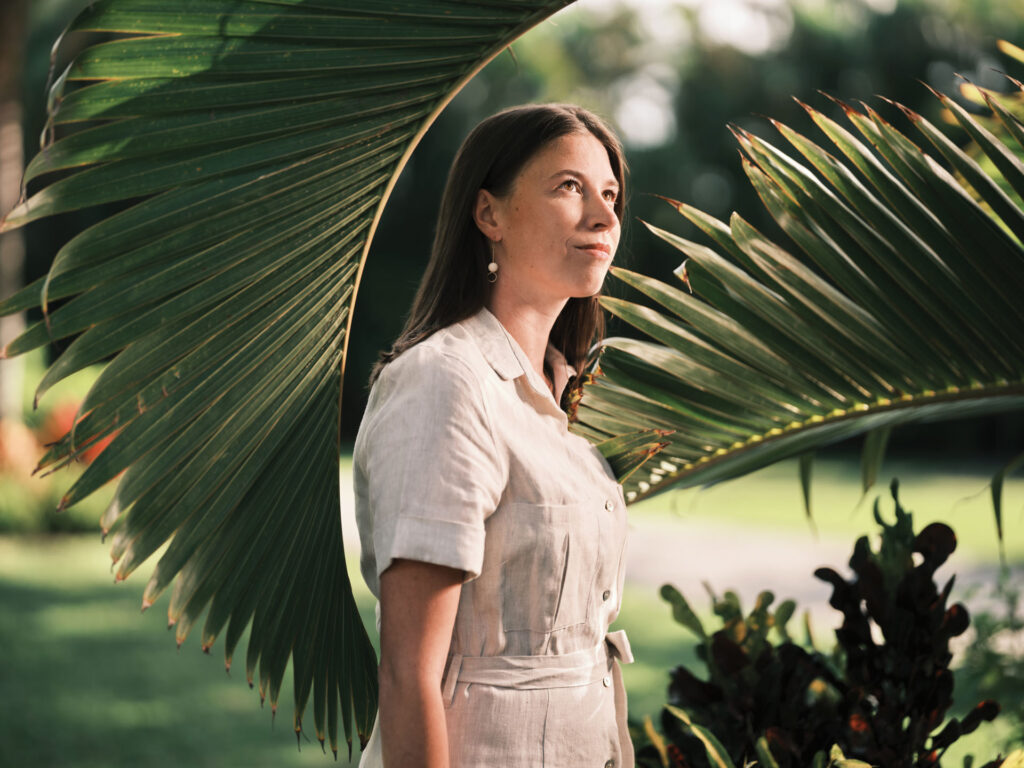
Seeing how the community rallied to help SCCF collect thousands of pounds of debris on Sanibel after the hurricane pushed Kealy to create more restoration opportunities for residents. Her next step is to invite Sanibel tourists to join the fight. This year, she’s implementing a voluntourism initiative so vacationers can help preserve the place they return to, year after year, via beach cleanups and invasive species removals.
In the meantime, she continues to urge all of us to act now and commends locals for heeding the call. “Sanibel and Captiva residents, they move down here for a reason and see its natural beauty,” Kealy says. “They’ve seen the changes. And they want to be a part of the solution.”
—Addison Pezoldt
Nick Batty
Farmer, Inyoni Organic Farm
Nick Batty was majoring in horticulture at the University of Florida, trying to decide what to do with his degree after graduation, when he stumbled upon the writings of poet Wendell Berry. The writer and farmer often wrote about seeking refuge in nature and the importance of conservation. “He inspired me to look at farming on a sustainable level,” Nick says. As a student, Nick had the chance to work on some organic farms, and Wendell Berry’s words gave him a sense of direction for what path to take next.
Nick, who was born and raised in Southern Africa’s Swaziland, now Eswatini, moved to Naples when he was 10. The son of a farmer, he learned from his father, drawn to the physical part of the work. “I have a hard time at desks, staying focused,” he says with a laugh. Soon after graduating, Nick started Inyoni Organic Farm, a 6-acre, USDA-certified organic farm in Golden Gate Estates, where he now produces about 50 varieties of vegetables, herbs, flowers and fruit—including a small batch of pineapple trees left over from his father’s former farm nearby.
In January, rows upon rows of fresh crops, like plump radishes, budding turnips and abundant baby greens, line his fields, all of it grown in ways that prioritize a healthy environment. That means using a natural neem oil instead of harsh insecticides and planting cover crops in the summer to improve the soil. Nick also works to help with the region’s water quality issues by ensuring the farm’s drip-irrigation system delivers water directly to the plants with minimal runoff into the Gulf.
Nick is dedicated to sharing his knowledge and bounty with the community. He sells his crops directly to consumers at farmers markets throughout the week and through his online shop. He’s also a go-to for local fine-dining chefs, who turn to Nick for specially cultivated gems. The farmer might work with a chef to review seed catalogs before planting for the season, grow hard-to-find, coveted ingredients (so long as they grow in harmony with the land), and create special blends of greens so restaurants can offer distinctive dishes. Throughout the year, he hosts events on the farm for visitors, including luncheons with agricultural guest speakers, to keep the conversation about the future of local food at the forefront.

Looking ahead, Nick’s eyeing purchasing additional land with Victory Farms owner Thomas Webb. He knows more organic farming translates to less impact on the larger ecosystem.
While Nick’s approach contributes to myriad facets of protecting the Gulf, he says his role is one of many in a cast of players working at the national and local level. In his poem, A Standing Ground, Wendell Berry wrote, “Better than any argument is to rise at dawn/ and pick dew-wet berries in a cup.” Nick is happy to get his hands dirty for the cause. “I’m just a very, very small part,” he says.
—Kristine Gill
Diana Giraldo
Sustainability Architect & Consultant, Community Development Reimagined
A city is like a body; it’s a system, Fort Myers architect and urban designer Diana Giraldo says. If one part of the system is failing, then the whole body struggles. As Southwest Florida’s population balloons, Diana says it’s essential to approach development with a sustainable mindset. She launched her Community Development Reimagined (CDR) consulting firm in 2020 to help build human- and earth-friendly projects that enhance communities. She pushes for green building certifications—metrics that recognize stellar environmental and energy standards—on all her projects. That may mean offering interventions for water-saving and energy-efficient techniques, filling a neighborhood with drought-tolerant native plants or ensuring new builds have access points for locals to connect.
For her, designing a building extends far beyond the structure itself. She thinks about how a space can transcend its footprint and positively impact the community as a whole. “It’s never just about the building,” Diana says. “It’s about the context of the building and the environment together.”
The Colombian-born architect, who served as the City of Fort Myers’ first sustainability manager for seven years, grew up in an affordable housing community with a propensity for being outside and limited access to greenspace. As sustainability manager (a role created for her), she implemented the green building program used in all of the city’s affordable housing projects.
Through CDR, Diana works with clients to address transportation concerns (an issue she worked on in her native Bogotá), amplify greenspaces (she consults on the City of Fort Myers’ Parks Master Plan), and create more pedestrian- and bike-friendly paths (the bike crash survivor also founded Streets Alive SWFL in 2012 to promote road safety locally).
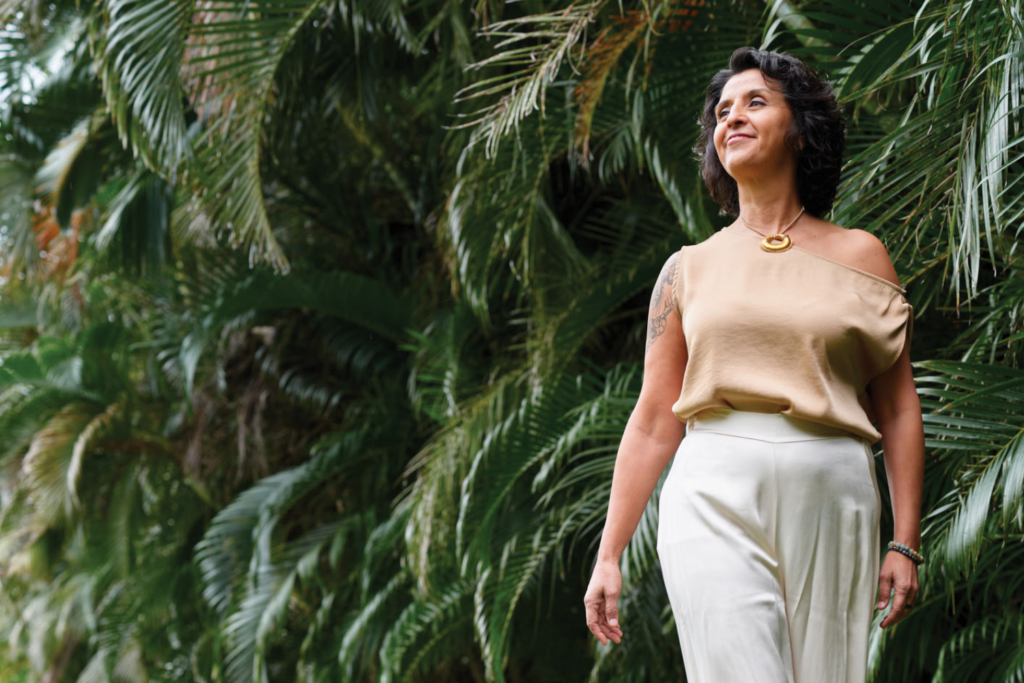
She’ll weigh in on development plans that may encroach on sensitive environmental lands when there’s an opportunity, and outside firms consult Diana to understand the local culture and context for their plans. Currently, she’s working on The Greater Dunbar Initiative, which is set to transform the historically underserved neighborhood’s Southward Village into a vibrant, mixed-income community. Beyond adding 375 new units, the project will invest in nearby schools, add amenities, and introduce essentials, like a local grocery store. A major proponent of responsible landscape solutions, Diana has proposed turning a stormwater drainage pond into a feature with Florida-friendly landscaping, shade trees, benches, a walking path and exercise equipment. “That way, it’s integrated into the community,” she says.
In January, Diana announced her candidature for the Fort Myers City Council Ward 2 seat. At the top of her list of core issues is addressing affordable housing and changing regulations to allow for more sustainable development. Diana’s superpower lies in her ability to have a bold vision and the capacity to bring those ideas to life, creating spaces that foster vibrant, healthy communities. “Architects think a lot about what we’re leaving for the next generation,” she says. “It’s our job to set a path forward that has both balance and equilibrium.”
—Artis Henderson
Denise Wauters
Founder, Everglades Threads and Publisher of The Mullet Rapper
A decade ago, ready for new opportunities for her family, Denise Wauters embarked on a road trip through Florida, seeking a new home. The founder and creative director of the Paradise Web advertising agency fell in love with Naples for its serene beaches and connection to nature. Since then, she has directed her ever-churning mind to preserve what makes her adopted community distinct: the art, history and ecological wonders.
Soon after landing on the Gulf, the artistic Denise, who has long been fascinated with the natural world, ventured into the Everglades to explore the cypress swamps and sun-drenched prairies, capturing her experiences through her lens and sketch pad. “I felt like I was living in a postcard,” she says.
As she became aware of community needs, she unleashed her creativity to address them. About three years ago, watching artist friends struggle to gain exposure, she launched a sales platform, Everglades Threads, where she retails shirts, mugs, tote bags and related items with original art that celebrates iconic elements of Florida—see Denise’s Spoonbill, Hannah Ineson’s serene Wings over Water landscape, and Tara O’Neill’s Women who Fish scene. “It’s a passion project,” she says. “Everything I do is a passion project.”
Denise insists on carrying products that are locally designed, ethically made, eco-friendly and responsibly manufactured in the United States. She has also found other ways to leverage the site, expanding Everglades Threads to include “Threads with a Cause,” specially branded merchandise that raises money for environmental protection and saving the 1927 Bank of Everglades Building in Everglades City, a citizen-led initiative to recover the historical icon. In 2022, Denise purchased the Visit Everglades City website and The Mullet Rapper, a long-standing community newspaper focused on the town and surrounding areas, like Chokoloskee and the Ten Thousand Islands. Denise, who visits Big Cypress often, had a relationship with the paper and website’s prior owner. When the owner was ready to retire, Denise jumped at the chance to take over. “So many tourists pick up that paper,” Denise says. “It gives us a chance to educate the world, not just the community.”
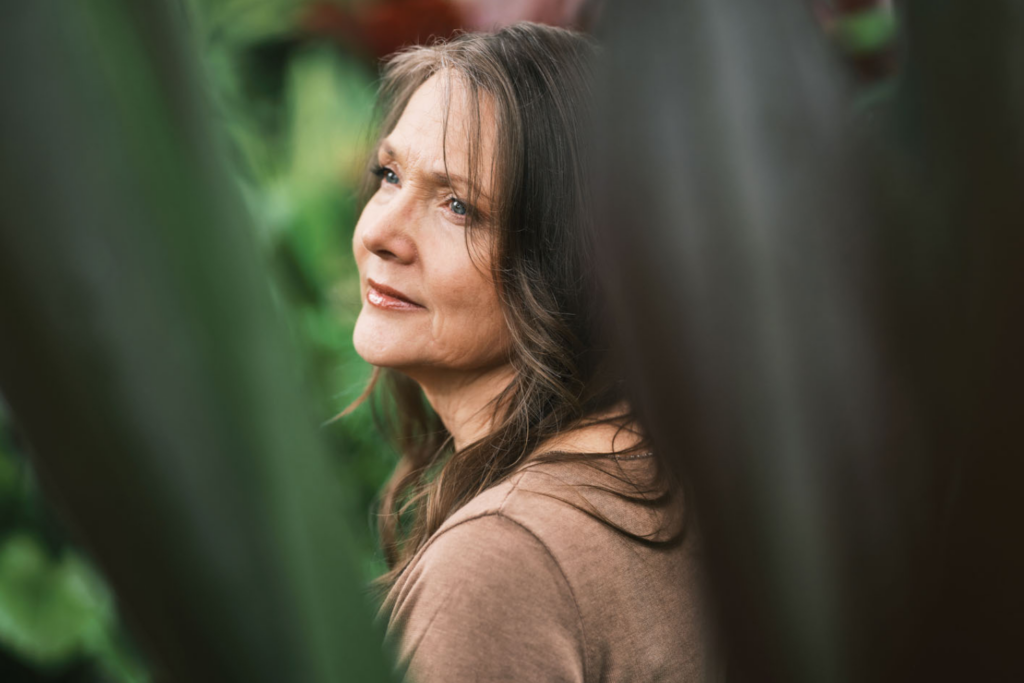
Denise has expanded The Mullet Rapper’s footprint to include coverage of other nearby environmentally and culturally distinct communities, like Goodland and Port of the Islands, and to cover environmental initiatives like the Comprehensive Everglades Restoration Plan and its regional impact.
One thing she won’t change: The quote from the great Florida conservationist Marjory Stoneman Douglas that has long appeared on the back page of every issue: “The Everglades is a test. If we pass it, we may get to keep the planet.”
—Jennifer Reed

